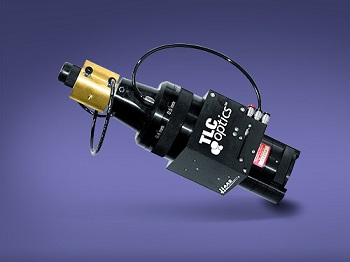A common problem in high-power lasers is the long warm-up phase and unstable operating conditions that appear if thermal lenses form in the optics used.

Thermal lenses are caused by the absorption of laser light in optical materials. Even if the absorption is only in the ppm range, the local temperature increase within the optics is significant for lasers with several kW of power. The low thermal conductivity of optical materials results in a strong temperature gradient, thus, the resulting refractive index gradient acts as an additional lens.
To compensate for the thermal lens, TLC OpticsTM are used. This thermal lensing compensation passively accommodates the thermal lenses of high-power collimators and focusing optics.
A special material and design selection allows the reduction of thermal lenses in kW lasers to less than the Rayleigh length.
Working Principle of TLC OpticsTM
In common substrate materials, the dependency of the refractive index, n, on the temperature, T, results in a positive value (dn/dT>0) however there are also materials with a negative dn/dT. Due to the clever combination of such materials - taking into account absorption coefficients, thickness, air gaps, and the radii of curvature –- it is possible to achieve compensation of thermal lenses across a wide power and temperature range.
Product Range
Both simple focusing optics and entire lens systems are available with TLC optics: for example fibre collimators.
The modular design of these components makes it possible to easily adjust the TLC optics to your setup. In a fibre collimator, for example, you select the spot size, the focal length, and the type of cooling. Simply let us know what you need.
We will develop an individual design together to optimally compensate the thermal lenses in your system!
For more information visit our website at